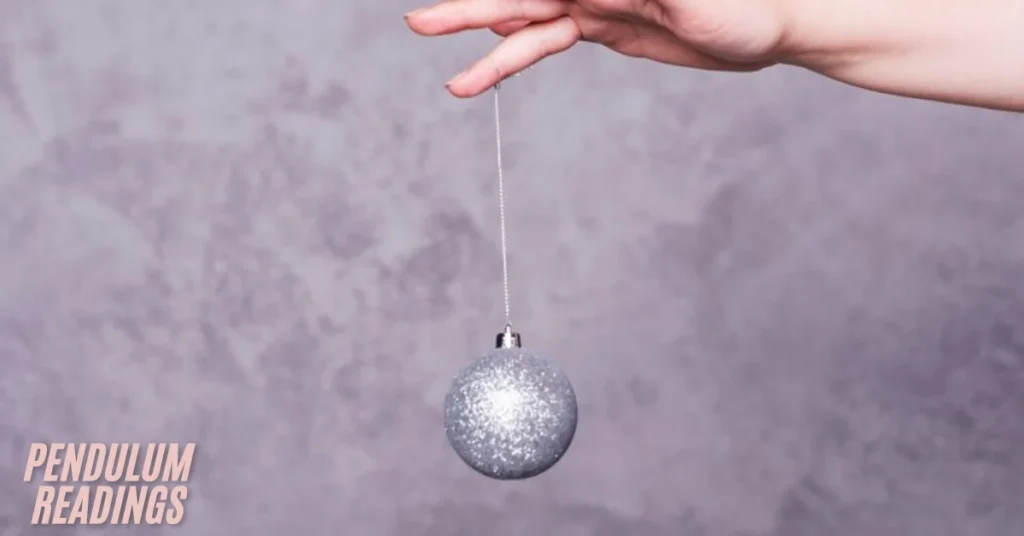Have you ever felt lost in life, yearning for guidance or clarity? Enter the fascinating world of pendulum readings. This ancient practice offers a unique way to tap into your intuition and uncover answers that may be just beyond your reach. Whether you’re a curious beginner or an experienced seeker, pendulum readings can provide insights into personal dilemmas, decisions, or even spiritual growth.
Imagine holding a simple object—a pendulum—swinging gently from side to side. It’s not just a mesmerizing sight; it’s also a powerful tool for divination and self-discovery. As we delve deeper into this intriguing art form, you’ll learn about its rich history, how it works, the various types of pendulums available, and tips for conducting effective readings yourself.
https://thecepblog.com/tech4seo-enhancing-digital-marketing/Whether you’re looking to enhance your spiritual practices or simply exploring new avenues of insight, understanding pendulum readings could open doors you never knew existed. So let’s embark on this journey together!
What is a Pendulum Reading?
Pendulum reading is a form of divination that uses a suspended pendulum to answer questions or gain insights. It operates on the principle that our subconscious mind can influence the movement of the pendulum, revealing answers hidden from our conscious awareness.
Typically, a practitioner holds the pendulum by its chain or string and asks it specific yes-or-no questions. As you focus, the pendulum begins to move in response—swaying back and forth, circling, or remaining still. Each motion corresponds to different types of responses.
This practice can be deeply personal and intuitive. Many believe that it taps into universal energies or spiritual guides, making it a popular choice for those seeking clarity in various aspects of life, from relationships to career decisions. Whether used for fun or serious inquiry, pendulum readings invite connection with your inner self while exploring life’s mysteries.
History and Origins of Pendulum Readings
Pendulum readings have a fascinating history that dates back thousands of years. Ancient civilizations, including the Egyptians and Greeks, utilized pendulums for divination and healing practices. They believed these tools could bridge the gap between the physical and spiritual realms.
The term “dowsing,” often associated with pendulum use, originated in medieval Europe. Practitioners sought water or minerals using forked sticks or rods. As time passed, this practice evolved into more complex forms of divination involving pendulums.
In the 19th century, interest surged during the Spiritualist movement. People began exploring various ways to connect with their intuition and seek answers through dowsing techniques.
Today, pendulum readings are embraced by both beginners and experts alike. Their accessibility allows anyone to explore this ancient art form while tapping into their intuitive abilities. The rich history adds depth to each swing of the pendulum as users engage with its mystique.
How Does it Work?
Pendulum readings operate on the principle of energy and intuition. When you hold a pendulum, it becomes a tool to tap into your subconscious mind.
The user typically asks yes or no questions while observing the pendulum’s movement. This reaction is often attributed to subtle muscle movements known as the ideomotor effect. These involuntary motions can guide the pendulum in different directions, offering insights that may not be immediately apparent.
Many believe that the pendulum connects with spiritual energies or universal consciousness. As you focus, your intentions align with these forces, allowing for clearer communication between your inner self and external energies.
The direction in which the pendulum swings—whether it circles, moves back and forth, or sways side to side—carries meaning specific to each inquiry. The beauty lies in its simplicity; even novices can quickly grasp how this ancient art functions without extensive practice.
Different Types of Pendulums
Pendulums come in various shapes, sizes, and materials. Each type has its unique energy and properties, making the choice exciting for both beginners and experts.
Crystal pendulums are popular due to their beauty and healing attributes. Amethyst or rose quartz can enhance intuition during readings.
Wooden pendulums offer a natural feel. They are often lighter than metal options, providing a gentle sway that some find easier to work with.
Metal pendulums tend to be more precise. Their weight gives them stability, allowing for clearer movement during inquiries.
Then there are specialty pendulums made from combinations of materials or designed for specific purposes like dowsing or chakra balancing.
Choosing the right pendulum depends on personal preference and intended use; it’s all about what resonates best with you!
How to Perform a Pendulum Reading
To start a pendulum reading, choose a quiet space free from distractions. Ground yourself and take a few deep breaths to center your energy.
Hold the pendulum by its chain or string, allowing it to hang freely. Make sure your hand is steady but relaxed. This will enable the pendulum to move without interference.
Next, establish a clear yes or no response. You can ask simple questions like “Is my name [your name]?” Observe how the pendulum reacts—circular movements may indicate yes, while back-and-forth could signify no.
Once you’ve set your baseline responses, begin asking more specific questions related to your inquiry. Stay open-minded as you interpret the movement of the pendulum; trust in your intuition as it guides you through each session.
Interpreting the Results
Interpreting the results of a pendulum reading can be both fascinating and perplexing. The movement of the pendulum reveals insights based on your questions, so it’s essential to stay focused.
A clockwise swing often indicates “yes,” while counterclockwise typically means “no.” However, some practitioners may experience variations in these interpretations, influenced by personal intuition or specific practices.
Observe how the pendulum moves. A steady rhythm suggests clarity, whereas erratic movements might signal confusion or uncertainty regarding your query. Take note of any sudden stops as they can indicate hesitation from your subconscious mind.
Remember that context matters; consider the question you asked and any emotional energy surrounding it. Keeping a journal of readings can help track patterns over time and deepen understanding. Each session is unique, offering new layers to explore within yourself.
Tips for Accurate and Effective Pendulum Readings
To achieve accurate pendulum readings, begin by selecting a quiet space. Distractions can interfere with your intuition and focus.
Clear your mind before starting. A calm mindset allows for better connection with the pendulum’s energy. Take several deep breaths to center yourself.
Hold the pendulum confidently but gently. Your grip should be firm enough to prevent it from slipping, yet relaxed to allow for fluid movement.
Ask clear and specific questions. Vague inquiries lead to ambiguous answers, so formulate each question thoughtfully.
Keep an open mind throughout the process. Resist overthinking or trying to control the outcome; trust in what you receive.
Practice regularly. The more you use your pendulum, the more attuned you’ll become, enhancing accuracy over time.
Consider using crystals or other tools that resonate with you during readings. They can amplify energy and provide additional clarity in interpretations.
Potential Benefits and Criticisms of Pendulum Readings
Pendulum readings offer various benefits that appeal to both beginners and seasoned practitioners. Many find them a powerful tool for gaining insights into personal situations, making decisions, or exploring spiritual questions. The simplicity of using a pendulum makes it accessible for anyone interested in divination.
However, criticisms exist as well. Skeptics argue that results can be influenced by the ideomotor effect—subconscious movements guiding the pendulum’s swing. This raises questions about the validity of readings.
Additionally, reliance on pendulums may deter individuals from engaging in more proactive problem-solving methods. Some believe this reliance could hinder emotional growth or decision-making skills over time.
It’s essential to approach pendulum readings with an open mind while also maintaining healthy skepticism. Balancing intuition and rational thinking can lead to a more fulfilling experience when working with this ancient practice.
Common Uses for Pendulum Readings
Pendulum readings are versatile tools used for various purposes. Many people turn to them for guidance in decision-making, whether it’s about career choices, relationships, or personal goals.
They can also aid in identifying blockages within one’s energy field. By asking specific questions, users may gain insights into their emotional and spiritual well-being.
In the realm of health, pendulums assist practitioners in diagnosing ailments. They help pinpoint areas that require attention during healing sessions.
Additionally, pendulum readings find a place in divination practices. Enthusiasts often use them alongside tarot cards or other mystical tools to enhance clarity on future events.
Some individuals enjoy using pendulums simply for fun or curiosity—experimenting with different questions while observing the movement patterns adds an element of playfulness to the experience.
Conclusion
Pendulum readings have captivated people for centuries, blending intuition with a simple yet powerful tool. Whether you’re just starting out or you’ve honed your skills over time, understanding the fundamentals can enhance your experience.
For beginners, pendulum readings serve as an accessible entry point into the world of divination and self-discovery. The straightforward process allows anyone to tap into their own intuitive wisdom. Meanwhile, experienced practitioners can deepen their methods by exploring various techniques and types of pendulums.
The versatility of pendulum readings makes them suitable for numerous situations—be it personal inquiries, decision-making, or even energy assessments in spaces. While some may criticize this practice as mere superstition, many find value in its potential to guide and clarify thoughts.
As you explore pendulum reading further, remember that every session is unique. Trusting your instincts while remaining open-minded will enrich your journey through this fascinating practice. Embrace the possibilities that come with each swing of the pendulum; there’s much to discover along the way.
FAQs
Q: What are pendulum readings?
Ans: Pendulum readings involve using a suspended weight to receive answers and insights, often for spiritual or psychic guidance.
Q: How do pendulum readings work?
Ans: The pendulum swings in different directions, responding to yes/no questions based on subtle energy shifts or intuitive signals.
Q: Can beginners perform pendulum readings?
Ans: Yes, pendulum readings are easy to learn and can be practiced by both beginners and experienced readers.
Q: What can I ask during a pendulum reading?
Ans: You can ask yes/no questions about relationships, career, health, or spiritual guidance, keeping them clear and specific.
Q: How can I improve accuracy in pendulum readings?
Ans: Consistent practice, staying relaxed, and building a connection with your pendulum can enhance reading accuracy.







